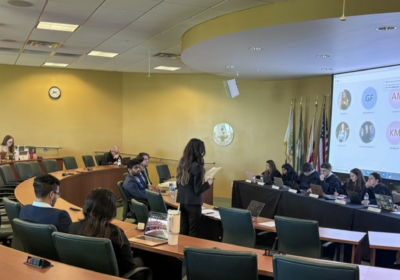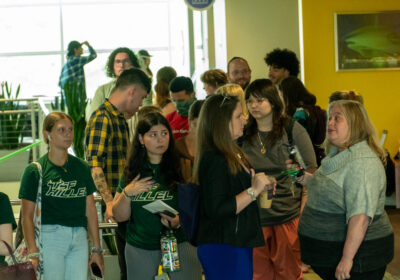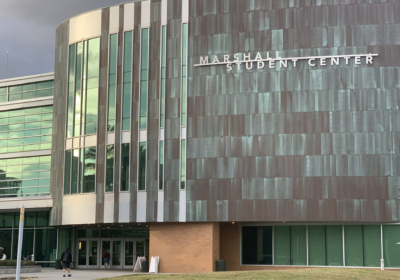Grad student seeks way to detoxify metals
A graduate student and part-time salsa dancer may one day find a way to change harmful metals, such as arsenic or chromium, into a non-toxic state.
Andrea Rocha, a 30-year-old doctoral student studying civil and environmental engineering, is taking an Alliance in Math and Science (RAMS) internship, which gives students and faculty members in U.S. universities a chance to work together on scientific research.
At the Oak Ridge National Laboratory in Oak Ridge, Tenn., Rocha will use computer programs to model metabolic pathways of the bacteria Shewanella oneidensis to generate hypotheses on how to use it to transform heavy metals into a non-toxic state without disturbing other life around a contaminated site.
“We’re going to need to know when we can use this organism or change its environment so it’s favorable in a biological setting,” Rocha said. “My goal is to find a Shewanella species to generate. I want to create an approach to get that species to grow and reduce contamination.”
The bacteria has the ability to “breathe in” certain metals and compounds and “breathe out” these metals in an altered state, according to the Shewanella Federation’s Web site. This means that when the bacteria consumes and processes hard metals, what is left is a metal that no longer has the ability to harm humans.
“I read about Shewanella and I kept seeing this and thinking, ‘I’ve never heard of this.’ I thought, ‘Wow, this is a super bacteria — it’s fascinating.’ No bacteria can do this much stuff that I knew of,” Rocha said.
After contacting Dr. Jim Frederickson at the Pacific Northwest National Laboratory in Washington, Rocha was sent her first culture of the bacteria. Since then, she has been interested in studying it.
“I’m just trying to make my part by taking what’s already been known and just applying it,” said Rocha.
She hasn’t spent her whole life studying Shewanella, however.
Rocha grew up in Texas, where she earned a degree in biology at Texas A&M University. After working at Intact, a contamination site cleanup company, she moved to Norfolk, Va., to attend Old Dominion University, where she later earned a master’s degree in ocean and earth sciences.
Growing up in central Texas, Rocha had a passion for music — she played the flute in mariachi bands around Texas and seriously considered music as a major in college. Though her interest in the sciences had been temporarily swept aside for music, Rocha researched the biology programs of various universities in Texas before deciding to study biology at Texas A&M.
Rocha also serves as a student representative on the board of the Society for the Advancement of Chicanos and Native Americans in Science (SACNAS), an organization dedicated to helping Latin and Native American students of the sciences progress in their chosen field.
Dr. Peter Stroot, Rocha’s adviser, recognizes her ability to encourage minority groups in the sciences. Since joining his laboratory group, she has provided tours of the laboratory to high school students and their parents as part of an effort by the USF College of Engineering to recruit minority students from the Tampa metro community.
“She is always in a positive mood, which is important to maintain during the stressful periods of Ph.D. research,” Stroot said.
One of the ways Rocha keeps this positive outlook is by doing something that has nothing to do with chromium, bacteria or the scientific method. This passion — Salsa dancing — stems from her Mexican roots.
“Dancing is a great outlet for me and yes, it is a stress relief,” she said. “It helps me clear my mind and keep a balance between the life of a graduate student and my research.”






